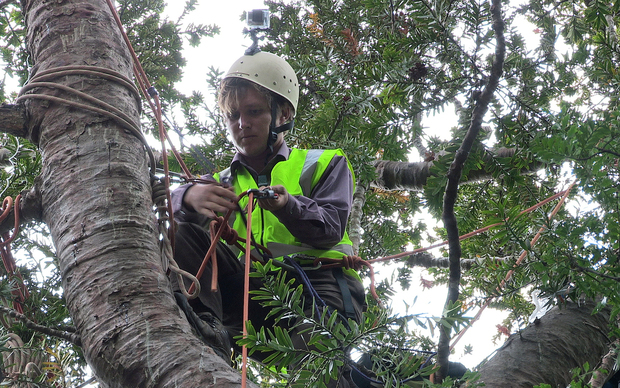Fast forward to 2015. A west Auckland property developer acquired a section of land in a good location with great views. It has a bit of native forest cover that’s in the way of any development opportunity, including a kauri tree estimated as being 500 years old, and a 300-year-old rimu tree.
Although the developer had the good sense to check with Auckland Council to gain consent for removal of this forest remnant before starting work, they did not include as part of their due diligence process before acquiring the property, the public impact of removing heritage trees. Auckland Council subsequently issued a non-notifiable consent approving the development of the site including the removal of the trees.
The local west Auckland community and nature lovers from hither and yon got word that something was up and that this piece of forest and its heritage trees were under threat. Protest action ensued, including one game fellow shinning up the kauri beyond the reach of Police officers who issued him with a verbal prosecution notice. News and social media went berserk. Celebrities and politicians got involved. Questions were asked.
Auckland Council said it had complied with legal requirements when issuing its consent, which could not be revoked. Reports prepared by council officers were examined and their initial concerns about development on this site appeared to have been tempered, to support the non-notifiable consent decision.
It was the property owners who wisely decided to back down, rather than council emerging from its legal fortress and changing its decision. From this incident there have been significant costs to both parties – council and developer – both financial and reputational. Costs that could have been avoided if council officers and the developer had thought about issues beyond minimal legal compliance. Simply focusing on compliance with the Resource Management Act and the council’s various plans demonstrates the vast difference between legal compliance and good practice community engagement.
Lessons to be learned from this include that good practice community engagement will always incorporate legal compliance, where required. Legal requirements are a minimum standard to be applied, not the only standard. Identifying and analysing stakeholders is an essential element in any good practice community engagement process. Had this been undertaken correctly, and early, then the developers would have known, before purchasing the property, the intensity of public interest. The council, for its part, would have required the application to be notified.
The importance and influence of affected stakeholders and communities should always be examined, and should be part of any conversation that council officers have with applicants. A council that was in touch with its communities wouldn’t have allowed this situation to happen.


 RSS Feed
RSS Feed
